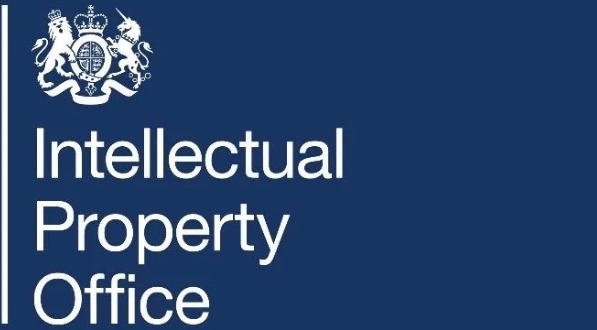Consultation on Standard Essential Patents
Potential measure 1: Rate Determination Track (RDT)
Rationale for intervention
The government wants to ensure it can support all businesses in the SEP ecosystem, especially SMEs, through greater transparency and predictability in SEP licensing and access to efficient dispute resolution.
In SEP disputes before UK courts, issues of infringement, essentiality and validity of patent(s) are determined by a series of technical trials that take place before the determination of a licence rate. This means that cases can take many years with multiple trials and associated high costs. This may demonstrate that there are opportunities to deal with rate determination first, as such an approach goes straight to the heart of the issue: resolving the dispute over the rate for a SEP portfolio.
Introduction of an RDT
We are considering the introduction of a ‘Rate Determination Track’ (RDT) to the Intellectual Property Enterprise Court (IPEC). This would supplement the existing Small Claims and Multi Claims Track, to ensure cost effective access for businesses. IPEC is a specialist court that handles intellectual property disputes, primarily involving patents, trade marks, designs, and copyright. The RDT, if introduced, would be a simpler and more efficient approach to proceedings to determine the correct licence rate. By using pre-litigation protocols, simplified procedures, specialists, and streamlined case management, the RDT would focus on the narrow issue of rate setting. The RDT could also be launched as a pilot to allow effective evaluation over time.
As part of its work, the IPO supplemented the evidence it received through its call for views with independent research (see Annex 1) and carefully analysed these when developing this consultation. This includes evidence from stakeholders that there is a lack of price predictability when it comes to implementing technical standards. In dealing with price predictability and other barriers that are addressed by the RDT, the Government has also looked at a range of alternative solutions, including those put forward by stakeholders through the call for views.
The government has also considered several other ways to introduce a quick, cost-effective and efficient rate determination route. Although we believe there are advantages to using the existing court structure and adapting it to a new process, this is not the only option. There were a range of potential solutions we considered, including the introduction of a new arm’s length body, equivalent to the Competition Appeal Tribunal. We also considered whether there is potential to expand the scope of the UK Copyright Tribunal, and whether there were other mechanisms that could be considered to achieve the same outcomes. We invite views in the consultation on what other solutions could be introduced to achieve cost effective and efficient rate determinations for SEPs.
Proposed scope and remit of the RDT
We propose that the scope of the RDT is limited to cases where infringement, validity and essentiality are not in dispute. There is also an expectation that ADR mechanisms will have been used before use of the RDT. Those mechanisms should have narrowed down disagreements in SEPs disputes to the issue of a licence rate (and perhaps other relevant terms of a licence). The RDT is therefore intended to provide a streamlined mechanism to set rates as required and agreed by the parties. There is further discussion of the government’s expectations about ADR, including in the context of pre-action protocols, in Part 2 below.
The RDT would provide a binding rate determination on request of either the licensor or licensee. As the proposed track would sit within the High Court, there would also need to be mechanisms to ensure there is an appropriate appeal route for rate determination decisions made under the RDT, following the same appeals process as in current disputes.
Efficiency, structure and functioning of the RDT
We expect to achieve increased efficiency through a combination of streamlined mechanisms tailored specifically to rate setting and FRAND obligations. These include appropriate rules and protocols, case management guidelines to expedite hearings, and the adoption of tailored procedural rules of evidence proportionate to the case. In addition, we will consider how cases can be heard by relevant subject-matter experts, to reduce the need for detailed expert evidence in some cases and improve speedy decision making. The RDT will have the flexibility to adopt processes, including remote hearings where appropriate.
Proposed methodologies for SEP determinations
We recognise that different methods exist for setting rates (including comparable rates; top-down, bottom-up; hedonic price regression; hypothetical negotiation scenario; and incremental value approach). Disputes arise across a range of contexts, each requiring different approaches to calculating rates. Whilst some may favour a standardised methodology to ensure consistency and predictability, others may argue flexibility is essential to reflect the specific facts and nuances of each case. At this stage, we are keen to understand whether a single approach would be appropriate or whether the RDT should be empowered to apply different methodologies.
Transparency considerations
Publication of the decisions of the RDT would encourage increased transparency. It would create a credible data point for SEP licence negotiations, and this can help build public trust. However, we are also mindful that some users may view publication as a barrier to accessing the RDT, particularly where sensitive commercial information is concerned.
Rules and procedures of the RDT
The government seeks industry views on the operational aspects of the proposed RDT e.g., rules of procedure. We want to ensure it has sufficient powers, whilst also providing efficiencies for parties using the track.
